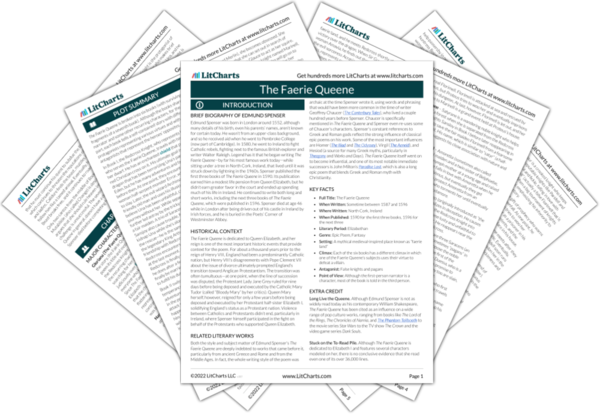Sir Guyon embodies the virtue of temperance (moderation and self-restraint), but he can still be drawn into a fight, particularly since this is still near the beginning of the book and he still has much to learn about how to truly live a temperate life as a knight. Medina, whose name suggests “middle” or “median,” is the voice of temperance here, proving herself to be more reasonable than her two more extreme sisters.
